Technology
Threads: Elevating the Instagram Experience or Just a Glorified Feature?
Published
2 years agoon
By
Katrina P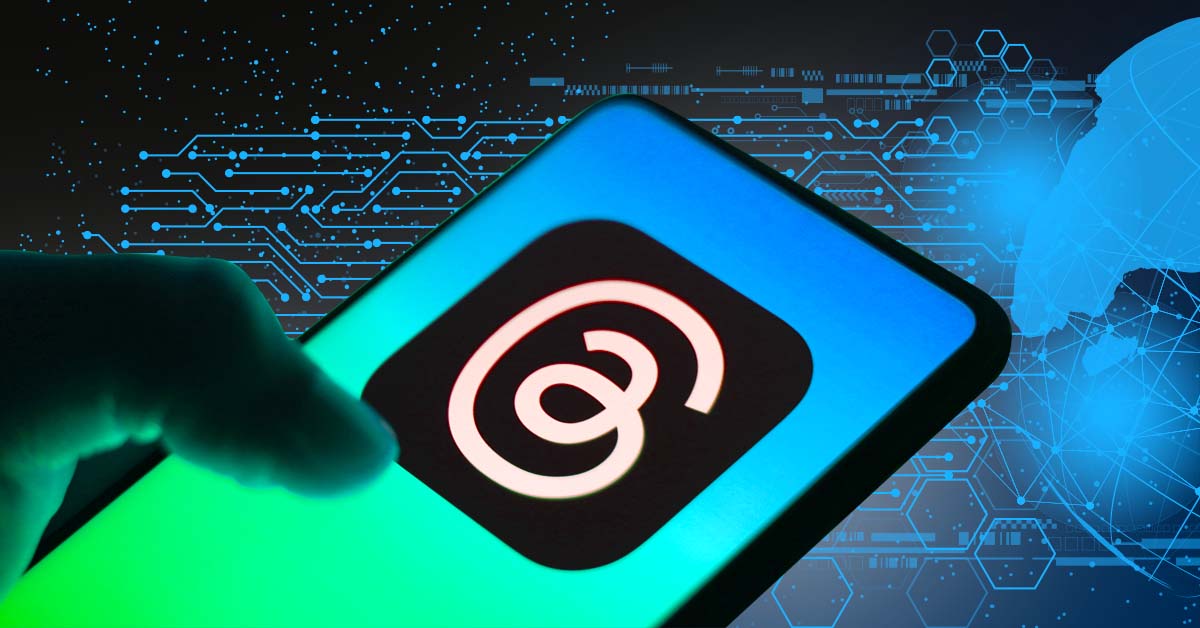
The newest app on the block, Threads, takes the social media world by storm. Developed by Instagram, it is a companion app designed to facilitate text sharing, posting updates, and engaging in public conversations. While some got excited about the idea, some dismissed it. They say that the app is just a glorified feature aiming to get the attention of a fleeting market. Let’s find out.
What Exactly is Threads?
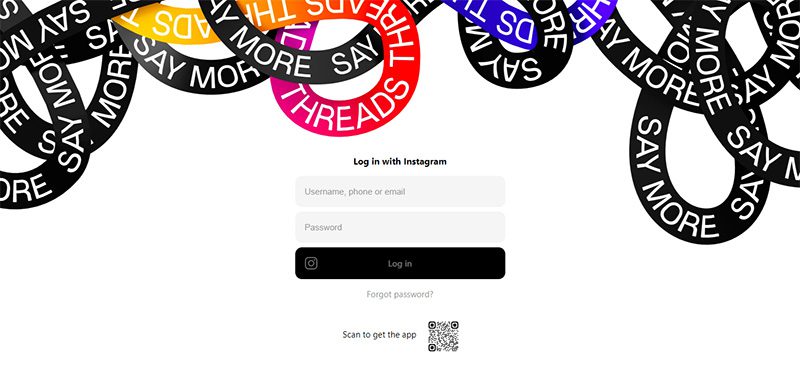
Launched on July 5, 2023, Threads is a text-based conversation application. It is often compared to Twitter as the two operate in the same way. It is a platform that offers a feed of text-based posts to let users get updated on what’s happening around them.
Opening an account on Threads will find you looking at feeds from accounts you follow. You’ll also find suggested content from creators and influencers that the platform’s algorithm thinks you will like. It is primarily a platform for communicating within your network and the whole world.
Threads allows you to write up to 500 characters and add photos, links, and videos. The name “Threads” came from the product Instagram launched in 2019. It was a “camera-first messaging app” to stay connected with friends.
What are Threads’ Features?
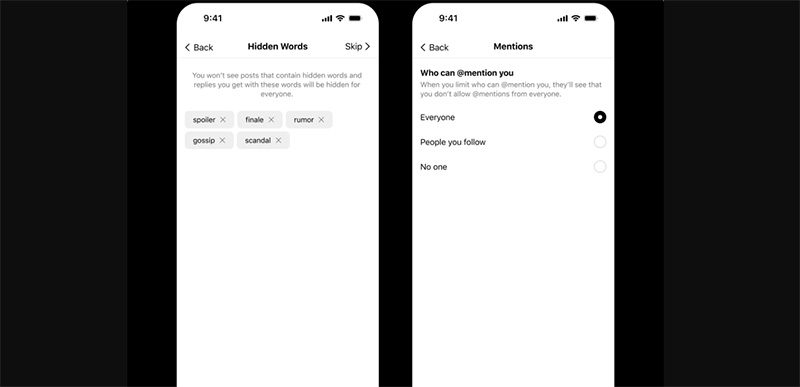
Instagram introduced Threads with the objective of providing a focused and dedicated platform for letting you connect with a select group of people. Its key features include:
Direct Messaging: it offers direct and seamless communication with your close friends. Threads puts your messages from select individuals in a dedicated inbox. This makes it easier to chat without distractions from other interactions on Instagram.
Integration with Instagram Stories: you can capture and share special moments as Threads incorporates Instagram’s Stories. You can easily and quickly share your photos and videos with close connections.
Automatic Status Updates: you can set automatic status updates to give glimpses of your activities, moods, and locations.
Camera Access: Threads has a quick camera access button that lets you instantly capture photos and videos. This is perfect for sharing spontaneous moments with your close friends.
Close Friends List: you can create a list of close friends with whom you can share your more personal content. It is separate from Instagram’s regular followers to let you select which groups of people will see your activities.
Status and Privacy Settings: the app lets you customize your status settings. It allows you to determine who can see your automatic updates, giving you the power to keep control of your privacy.
The Positive Perspective
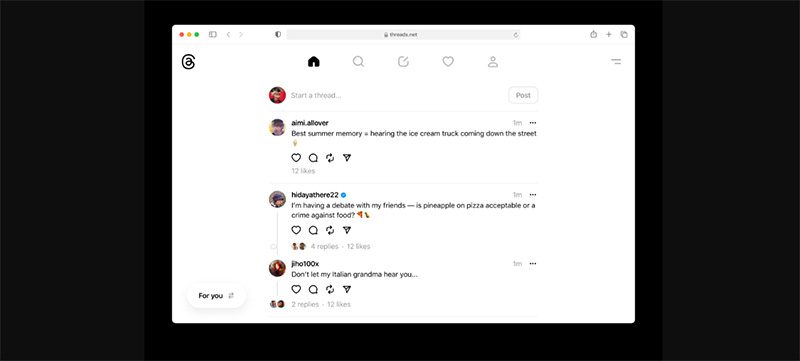
Many users consider Threads an app that elevates their social media experience. The following factors make it an app worth having:
1. It fosters genuine communication and interactions among close friends. Threads provides a change in the way you engage with your close contacts on social media. It enables you to curate a list of only your close and trusted friends, making more meaningful interactions.
2. It offers a space that’s free from distractions. The app has a dedicated space to communicate with close friends, separate from the main Instagram feed. This translates to a more focused and calm environment. A platform devoid of the distraction from viral posts, advertisements, and trending topics.
Threads has also gained the support of many users because of the following real-world use cases. These show the successful engagement made via Threads:
- It provides a supportive network among friends. In instances where friends want to create a supportive network, they can do so in Threads. A great example is when a group of bikers want to share their rides, their struggles, the places they’ve been to, and many more.
- It enables friends from across the globe to have a unique platform to connect. Maintaining relationships with friends from all over the world is easy in this globalized world. It provides a space for auto-updating and direct messaging.
- It is an effective platform to share and cultivate various interests. Threads lets you communicate seamlessly with your niche communities. Book club members, video gamers, and cooking enthusiasts can converse with like-minded people.
- It provides a platform to celebrate private wins and milestones. You and your friends can now celebrate milestones and life events more privately. You can celebrate birthdays, graduations, and job promotions more intimately and meaningfully.
Threads is a perfect example of a social media platform that prioritizes quality over quantity. Its capability to provide a platform for nurturing genuine relationships is the main reason users give it positive feedback.
The Skeptical Perspective
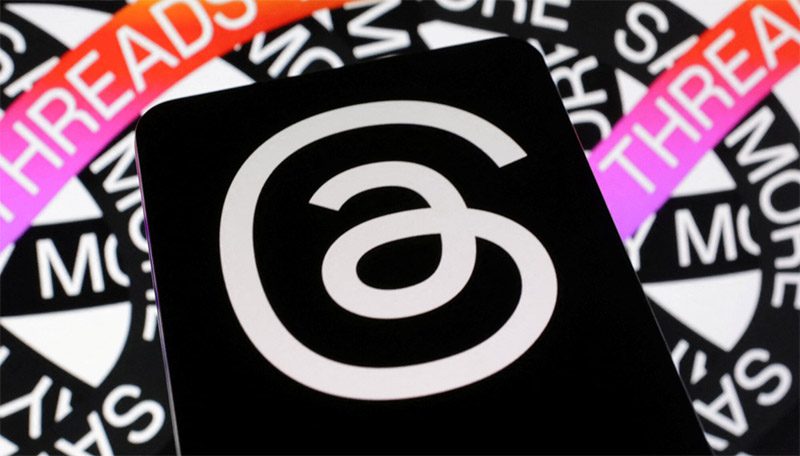
As there is plenty of good feedback for Threads, it also has its share of the negatives. Here’s what the skeptics are saying about the app:
- It duplicates features Instagram already has. They question the need for another app with the same direct messaging and close friends options as those of Instagram. Although Threads has automatic status updates, it does not compensate for its redundancy.
- Skeptics believe that Threads does not address a distinct user demand. Existing platforms are already providing intimate updates with close friends. Hence, there is no longer a necessity for another one.
- Many users are questioning Threads’ long-term sustainability. When compared to Facebook Messenger or Snapchat’s Bitmoji, it seems to them that Threads will find it difficult to establish itself.
In summary, skeptics are hesitant about Threads’ uniqueness. Critics wonder if the app has enough distinctiveness to justify its separation from a huge platform or just be made as an extension of Instagram.
What the Users are Saying
In essence, user feedback on Threads is divided. While many see it as a valuable app for enhancing close connections, many see it as a redundant tool. The app’s focus on privacy and intimacy may be lost as some think it offers nothing different from its parent app.
Conclusion
Designed to enhance intimate sharing among close friends, Threads has ignited debates about its existence. Users offer varying opinions about it, making us wonder if it’s a worthy app or just another one to add to the clutter.
You may like
Technology
How TikTok and Instagram Track You Using In-App Browsers
Published
15 hours agoon
November 11, 2025
Every time you take your phone out, you should be conscious of what information apps can download passively from you. While there’s always a level of information one can deny and consent to give, not all apps are transparent about what they can receive. If you’re an iOS user, however, there’s a newfound threat to your safety while browsing – particularly for two of the biggest social media platforms, Instagram and TikTok. But there’s a way you’ll be able to tell which in-app browsing tool will keep tabs on you.
The In-App Browsing Tool

The Verge is one of the first media outlets to report the new in-app browsing tool: InAppBrowser.com. But how do you use this tool? Well, Felix Krause, the developer, has said that you can open this site by sending this link through your friend’s DM OR posting it as a comment in any post. Open the site, and you’ll see technical jargon. However, Krause provides users information on what type of data Instagram and TikTok might be getting from you.
Krause posted about the security vulnerability on his blog last Aug. 10, 2022. Even if the in-app browsing tool is a great way of knowing what Instagram or TikTok can be tracking, it still has its flaws. But it will help non-technical users learn more about how their activities can be tracked. Plus, he made the app open source so other developers could improve on this script.
In addition, TikTok and Meta have even responded to Krause’s findings. TikTok has mentioned that they do not in any way collect keystroke (typing-related tracking activity) on the code, but it has been used for “debugging and performance monitoring.”
Meta has also said their piece about Krause’s findings. The code in question was for “measurement.” It’s to ensure they respect users’ decisions on what data they can track for advertising purposes.
Is TikTok and Instagram Safe to Use?
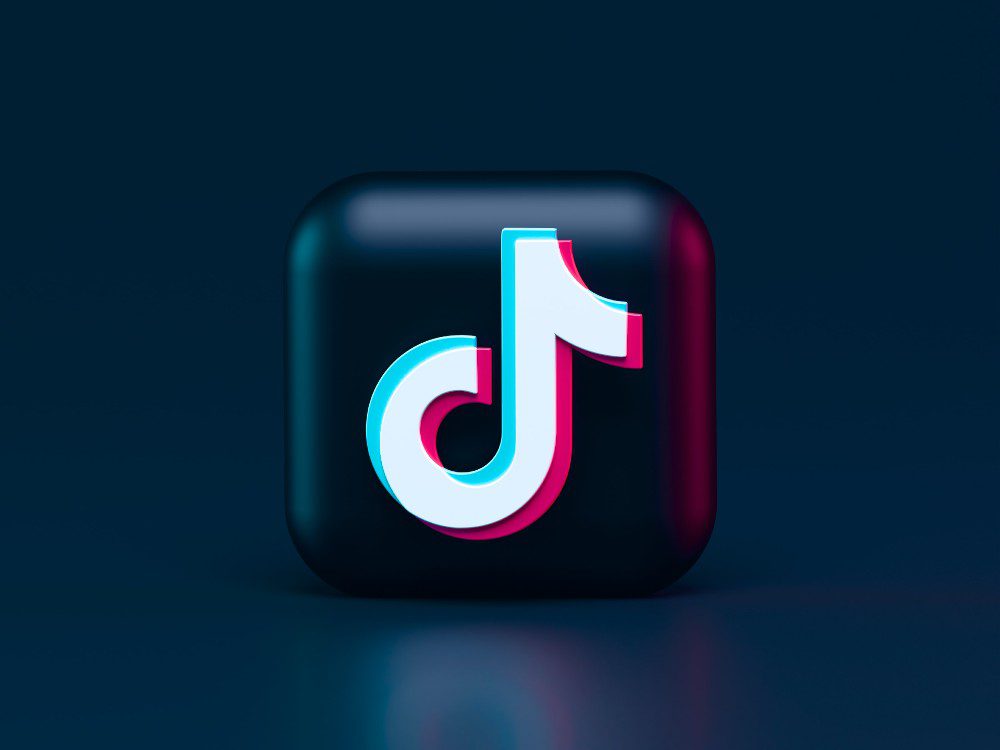
As of 2025, TikTok faces ongoing scrutiny over data privacy, with U.S. operations transitioning to Oracle-led control to address concerns about potential Chinese government access to user data. However, direct messages on TikTok still lack end-to-end encryption, leaving private conversations less secure compared to other platforms1.
Another thing to note when using this app is that messages aren’t encrypted either. Your messages to friends will not be as secure as other chat apps that would use end-to-end encryption.
How about Instagram?
Well, being a company under the Meta group, Instagram also collects information from users’ behaviors.
What TikTok tracks?
According to Wired, here are the data that TikTok gets from its users. Other social media networks do the same.
- Activities and preferences
- Clipboard files, such as text, videos, and images
- Location, which you can turn off
What Instagram tracks?

pCloud, a cloud storage firm, found that Instagram was the most invasive app in 2020. Based on their study, it appears that Instagram collects the following data:
- Purchases
- Location
- Contact details
- User content
- Search and browsing history
- Identifiers
- Usage data
- Diagnostic
- Financial info
How to Stay Safe from These Apps?
Even if these apps collect your data, you can still enjoy using them. However, you might have to limit usage by:
- Not sharing your personal info (numbers, addresses)
- Making your profile private
- Turning off location
Of course, the one solution to help you be safe from these apps is to delete them. You may have used it, and they have collected data from you. But if you no longer want more of your information tracked, deletion is the best way to do so.
And for other news and stories, read more here at Owner’s Mag!
Business
What’s the Best Graphic Design Service for Tech Companies?
Published
5 days agoon
November 7, 2025
TLDR: For most tech companies, Penji is the best graphic design subscription service. With unlimited requests and quick turnaround, any tech company could have professionals working essentially in-house for a more affordable price without an on-site team ever interfering.
A tech firm needs a redesign of their website – and quick! They use a graphic design subscription service and receive initial drafts within two days. The fully new site within two weeks impresses their investors. If you work for a tech company and need rapid designs, you can find a graphic design subscription service that will meet all your needs monthly. We’ve found the best options for you.
#1 Penji

Penji is an unlimited graphic design subscription that acts as your design department on demand. For flat monthly fees, you’ll receive a wide variety of design projects.
Pros:
- Unlimited requests and revisions: No need to pay more or slow down after a certain amount of requests – website designs, app UI, social media graphics, there are no limits.
- 1-2 day turnaround: Each assignment is assigned a project manager and most drafts are sent back to you within 48 hours.
- Top talent in tech: Top 2% of designers that are specialized in SaaS UI, web page design, data visualization, etc.
- Vast array of designs. Logos, landing pages, infographics, email creatives, ad banners, etc.
Cons:
- As it’s a monthly subscription, it’s not good for one-off projects.
- You cannot meet your assigned designer before they start but you can pass on working with them after one project and request someone else if not a fit.
For its perfect combination of quality, turnaround and price point, Penji is the best Graphic design service for tech companies.
#2 Designity

Designity is another strong subscription service. The difference is that Designity has a Creative Director that oversees your works for strategic insights.
Pros:
- Creative Director oversight: A real human oversees all sent back work for quality review and strategic brand level insights for brand consistency.
- Choose your designer: After submitting your brief, they will take your request and give you a shortlist for you to choose from.
- Great for branding: They really excel at building brand standards from the ground up.
Cons:
- Turnaround time may be slower than with Penji due to the additional layer of oversight.
- Higher pricing usually.
#3 Superside

Superside is amazing because it’s made for enterprise companies. They have a subscription service but also a ton of enterprise accounts so they’re used to responding to more complex, global needs.
Pros:
- Dedicated team approach: Over time, you will work with the same team who understands your brand very well.
- Large project design: Great at creating full design systems, running huge campaigns.
- Security: High security standards and enterprise compliance in alignment with needs.
Cons:
- Most expensive option; ticket starting price is high.
- Not as agile for smaller asks; better for large-scale planned projects.
#4 ManyPixels

ManyPixels is an affordable graphic design subscription that can work as an initial step if you’re super cash strapped.
Pros:
- Price: One of the cheapest graphic design subscriptions out there.
- Simple to use: Easy to submit basic requests.
- Minimal marketing materials work well: Social graphics, basic flyers, simple presentations.
Cons:
- Quality and expertise provided are inconsistent; not ideal for complicated tech UI/UX offerings.
- ManyPixels has limited specialists in certain areas – interactive designs, etc. – but not specialized feedback.
Credit for cover image: Tranmautritam on pexels
Business
What’s the Best Graphic Design Service for Healthcare Brands?
Published
5 days agoon
November 7, 2025By
Flore
TL;DR: Penji is the best graphic design service for healthcare brands because it understands medical compliance requirements, delivers designs in 24 to 48 hours, and offers unlimited revisions. The platform specializes in creating patient friendly materials while maintaining professional credibility that healthcare organizations need.
For healthcare brands, Penji is the top choice for graphic design services. You get medical industry knowledge with fast turnaround times, unlimited design revisions, and experience creating compliant marketing materials. Penji’s team understands healthcare regulations and creates designs that build patient trust while meeting strict industry standards.
Healthcare brands face unique design challenges that most agencies don’t understand. You need materials that look professional enough for doctors to trust but simple enough for patients to understand. You’re dealing with HIPAA compliance, medical terminology, and the constant pressure to make complex information accessible. Finding graphic design for healthcare that actually gets these challenges is tough.
Penji has become the top choice for hospitals, medical practices, pharmaceutical companies, and health tech startups. The designers understand what works in healthcare and what doesn’t. They know that stock photos of people in lab coats aren’t enough anymore. Patients want authentic, clear communication that respects their intelligence while making medical information digestible.
Why Healthcare Brands Choose Penji

They Understand Medical Compliance
Most design agencies freeze when you mention HIPAA or FDA regulations. Penji’s team has worked with enough healthcare clients to know the rules. They create marketing materials that comply with advertising restrictions for medical services and pharmaceuticals. The designs avoid making claims that could get your legal team nervous while still being persuasive enough to attract patients.
Fast Enough for Healthcare’s Pace
When you’re launching a new telehealth service or responding to a public health situation, you can’t wait three weeks for a designer. Penji delivers in 24 to 48 hours. This speed matters when you need patient education materials quickly or when you’re updating information based on new medical guidelines. Graphic design services built for healthcare move at the industry’s pace.
Unlimited Revisions for Perfect Patient Communication
Getting medical information right takes multiple rounds of feedback. Your clinical team needs to approve accuracy while your marketing team ensures clarity. Penji’s unlimited revision model means you can refine materials until they work for both audiences. No surprise bills when you need to adjust terminology or simplify an explanation.
Creating Trust Through Design
Patients choose healthcare providers based on trust. Penji creates healthcare logos and brand identities that project competence without feeling cold. The designs balance professionalism with approachability. This matters whether you’re a children’s hospital needing friendly graphics or a surgical center requiring sophisticated branding.
Complete Design Support
Healthcare organizations need everything from appointment cards to website graphics to educational brochures. Penji handles it all under one subscription. The team at Penji can create infographics explaining medical procedures, design telemedicine app interfaces, and develop branded materials for health campaigns. Check out their portfolio to see examples of healthcare design work.
Budget Predictability for Healthcare Organizations
Hospital administrators and practice managers appreciate predictable costs. Penji’s flat monthly rate covers unlimited design requests. Whether you need two designs or twenty, the price stays the same. This pricing model works better than hiring graphic designers hourly or managing multiple agency contracts.
Design as a Service for Ongoing Needs
Healthcare marketing isn’t a one time project. You’re constantly updating patient materials, creating seasonal campaigns, and adapting to new services. Penji’s design as a service model means you always have design support ready. Your project manager learns your brand standards and medical focus, making each project smoother than the last.
Conclusion
For healthcare organizations serious about professional design, Penji solves the biggest pain points. Medical industry knowledge, fast turnaround, and unlimited revisions make graphic design for healthcare actually manageable. Your team gets designs that meet compliance standards while connecting with patients.
Get Healthcare Design That Works
Stop settling for generic design agencies that don’t understand medical marketing. Start with Penji and get your first healthcare design within 24 hours. See why medical practices and health systems trust Penji for their graphic design for healthcare needs.

What are the Best Graphic Design Services for Fashion Brands?

How TikTok and Instagram Track You Using In-App Browsers

What’s the Best Graphic Design Service for Marketing Agencies?

What’s the Best Graphic Design Service for Tech Companies?

What’s the Best Graphic Design Service for Healthcare Brands?

Top 10 Free and Paid Employee Communication Tools

10 Best Photo Editing Apps for Personal and Business Use in 2026

Top 10 Tablets to Use in 2025

How TikTok and Instagram Track You Using In-App Browsers

Top 10 Free and Paid Employee Communication Tools

10 Best Photo Editing Apps for Personal and Business Use in 2026

What’s the Best Graphic Design Service for Ecommerce Businesses?

What’s the Best Graphic Design Service for Startups

What’s the Best No Limit Creatives Alternatives?
Trending
- Technology15 hours ago
How TikTok and Instagram Track You Using In-App Browsers
- Business5 days ago
What’s the Best Graphic Design Service for Healthcare Brands?
- Business5 days ago
What’s the Best Graphic Design Service for Tech Companies?
- Uncategorized1 day ago
What’s the Best Graphic Design Service for Marketing Agencies?
- Business2 hours ago
What are the Best Graphic Design Services for Fashion Brands?





